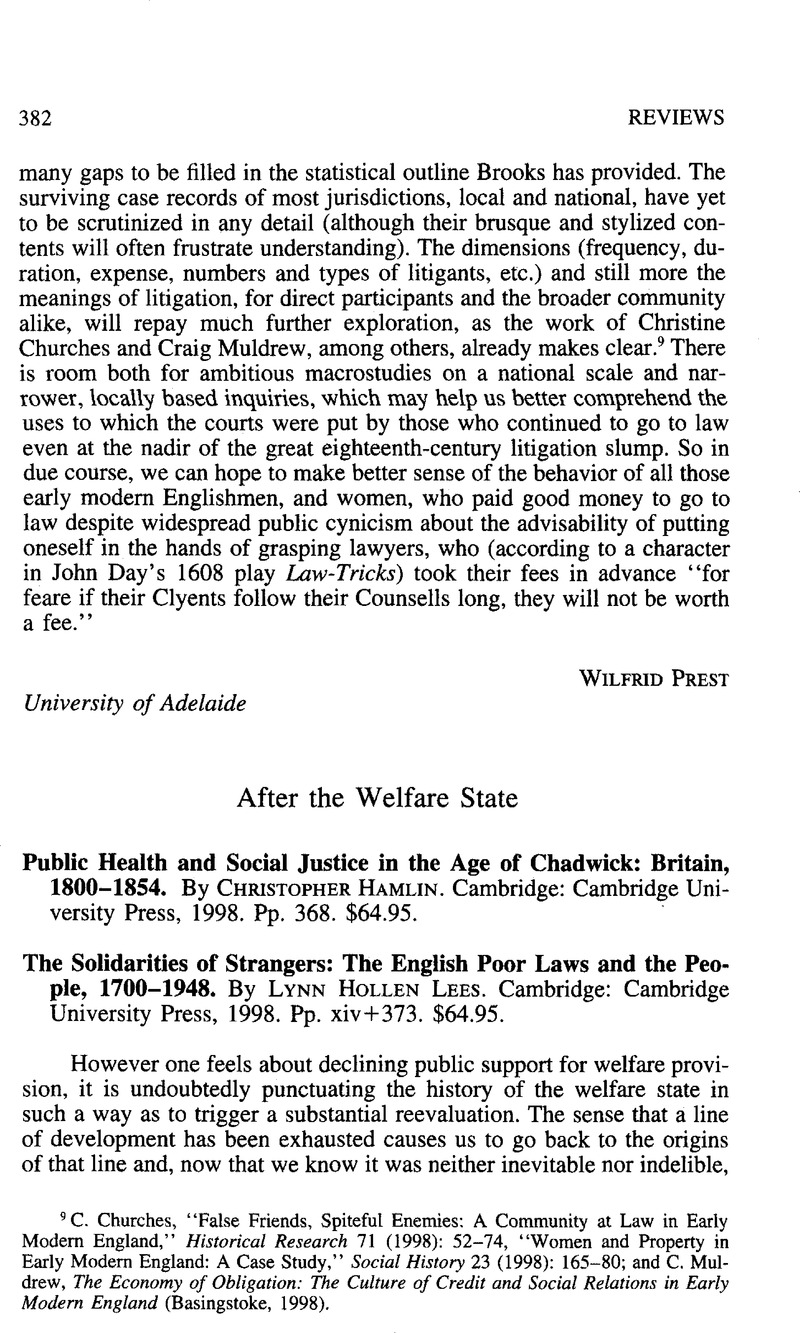Article contents
After the Welfare State - Public Health and Social Justice in the Age of Chadwick: Britain, 1800–1854. By Christopher Hamlin. Cambridge: Cambridge University Press, 1998. Pp. 368. $64.95. - The Solidarities of Strangers: The English Poor Laws and the People, 1700–1948. By Lynn Hollen Lees. Cambridge: Cambridge University Press, 1998. Pp. xiv + 373. $64.95.
Review products
Published online by Cambridge University Press: 10 January 2014
Abstract

- Type
- Reviews
- Information
- Copyright
- Copyright © North American Conference of British Studies 2000
References
1 Hamlin, Christopher, “Edwin Chadwick and the Engineers, 1842–1854: Systems and Anti-systems in the Pipe-and-Brick Sewers War,” Technology and Culture 33 (1992): 680–709CrossRefGoogle Scholar.
2 Marston, Maurice, Sir Edwin Chadwick (London, 1925)Google Scholar; Finer, S. E., The Life and Times of Sir Edwin Chadwick (London, 1952)Google Scholar; Brundage, Anthony, England's “Prussian Minister”: Edwin Chadwick and the Politics of Government Growth, 1832–1854 (University Park, Pa., 1988)Google Scholar. Other, more plausible components of the “standard view” against which Hamlin tilts are Lewis, R. A., Edwin Chadwick and the Public Health Movement, 1832–1854 (London, 1952)Google Scholar; and Flinn's, M. W. edition of Chadwick's, Report on the Sanitary Condition of the Labouring Population of Great Britain (Edinburgh, 1965)Google Scholar.
3 Clark, Anna, “Gender, Class and the Constitution: Franchise Reform in England, 1832–1928,” in Re-reading the Constitution: New Narratives in the Political History of England's Long Nineteenth Century, ed. Vernon, James (Cambridge, 1996), pp. 230–53Google Scholar; Waters, Chris, “‘Dark Strangers in Our Midst’: Discourses of Race and Nation in Britain, 1947–1963,” Journal of British Studies 36 (1997): 207–38CrossRefGoogle Scholar.
4 Hilton, Boyd, The Age of Atonement: The Influence of Evangelicalism on Social and Economic Thought, 1785–1865 (Oxford, 1988)Google Scholar; Mandler, Peter, Aristocratic Government in the Age of Reform: Whigs and Liberals, 1830–1852 (Oxford, 1990)CrossRefGoogle Scholar.
5 Poovey, Mary, Making a Social Body: British Cultural Formation, 1830–1864 (Chicago, 1995), p. 114Google Scholar, and see also her autocriticism, “From New Historicism to Historical Epistemology,” Journal of Victorian Culture 4 (1999): 131–39CrossRefGoogle Scholar.
- 1
- Cited by


